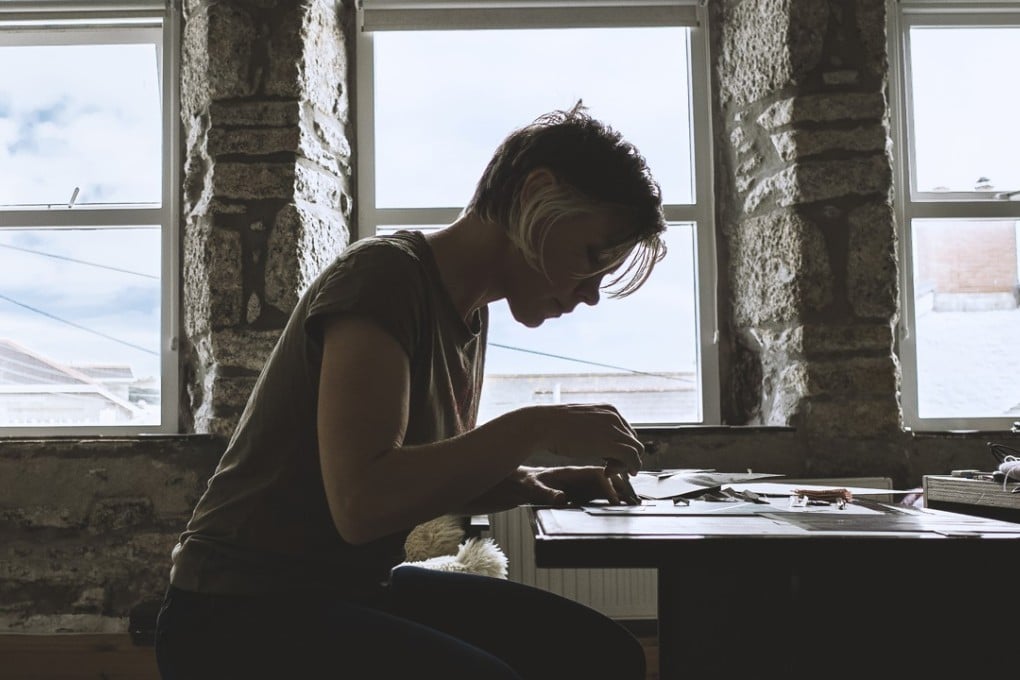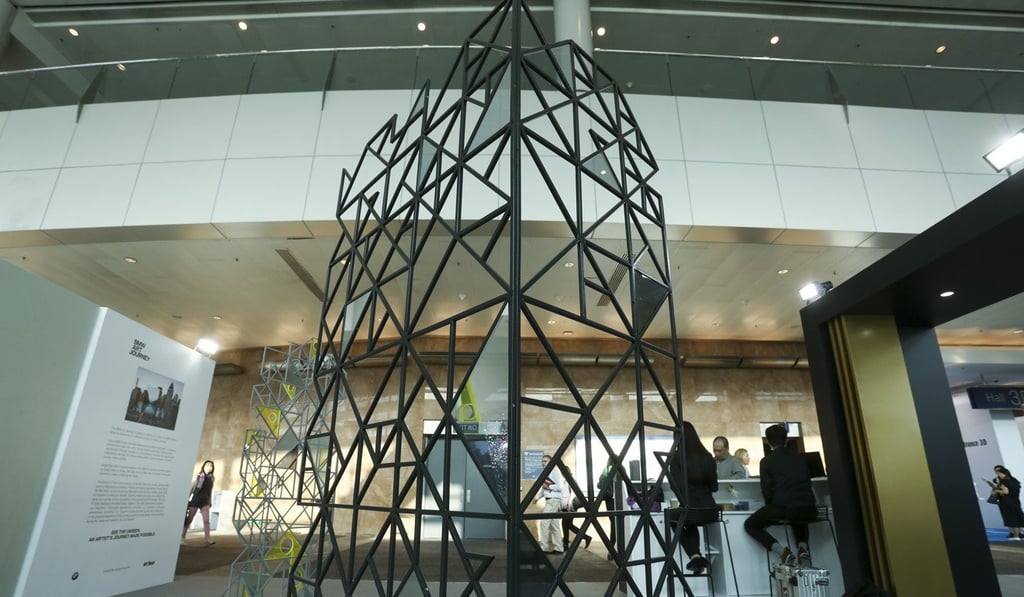British artist visits 16 lost libraries along the Silk Road in epic motorbike trip
Abigail Reynolds’ ‘Ruins of Time’ exhibition is the result of a five-month journey through 2,000 years and half the globe

Abigail Reynolds and I peer at each other through a two-way mirror – the kind police use to observe suspects in interrogation rooms. We’re in the BMW Lounge at Art Basel Hong Kong, at the Hong Kong Convention and Exhibition Centre, in Wan Chai. The space is brightly lit, so the glass works as a mirror and a window at the same time. Both of our faces are looking directly at me. I know, however, that we are standing opposite each other. As my brain scrambles to solve the visual puzzle, my face, reflected in the mirror, registers confusion. Reynolds is pleased.
“I like to create distortion and play with perspective. I’m really aware of that in my work with sculpture, and I make things that you perceive differently, as you change position.”

The British artist is in Hong Kong to showcase her latest exhibition, “The Ruins of Time: Lost Libraries of the Silk Road”. The mirrors are set into Stelae, a sculptural form made of square grids broken down into geometric shapes, like latticework. This, and the other works on show, are the outcome of an epic set of journeys Reynolds made over five months to the sites of 16 lost libraries along the Silk Road. Shattered by natural disasters, destroyed by war or dismantled by competing rulers, the libraries span half the globe, and over 2,000 years of history.
The two arms of Stelae stand at 90 degree angles, like an open book. “Lattice structures are a common feature,” says Reynolds. She explains that some ancient libraries contained papyrus scrolls, rather than books. “The papyri would have rolled off traditional shelves, so instead they were slotted into lattices, like bottles in a wine rack.” I ask where her fascination with libraries stems from.
“I have always loved them,” says Reynolds. “I was born in the UK in the 1970s, when the welfare state was alive and kicking and libraries were well supported. As a child, I was allowed to go to the library, on my own, every day after school. It was a freedom for me. The way I perceive libraries is that they’re a place that’s free to enter, where people’s voices travel through time.”
